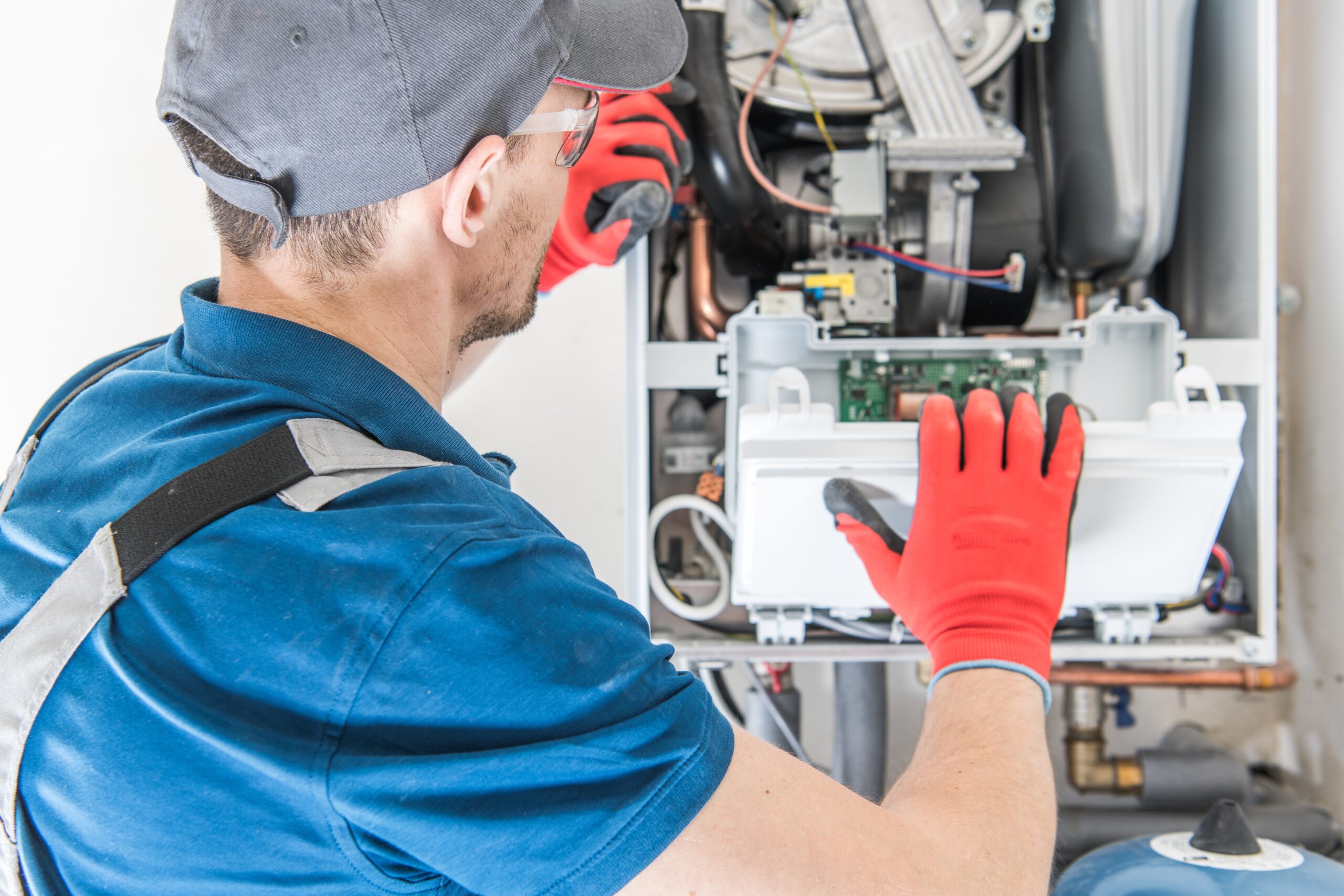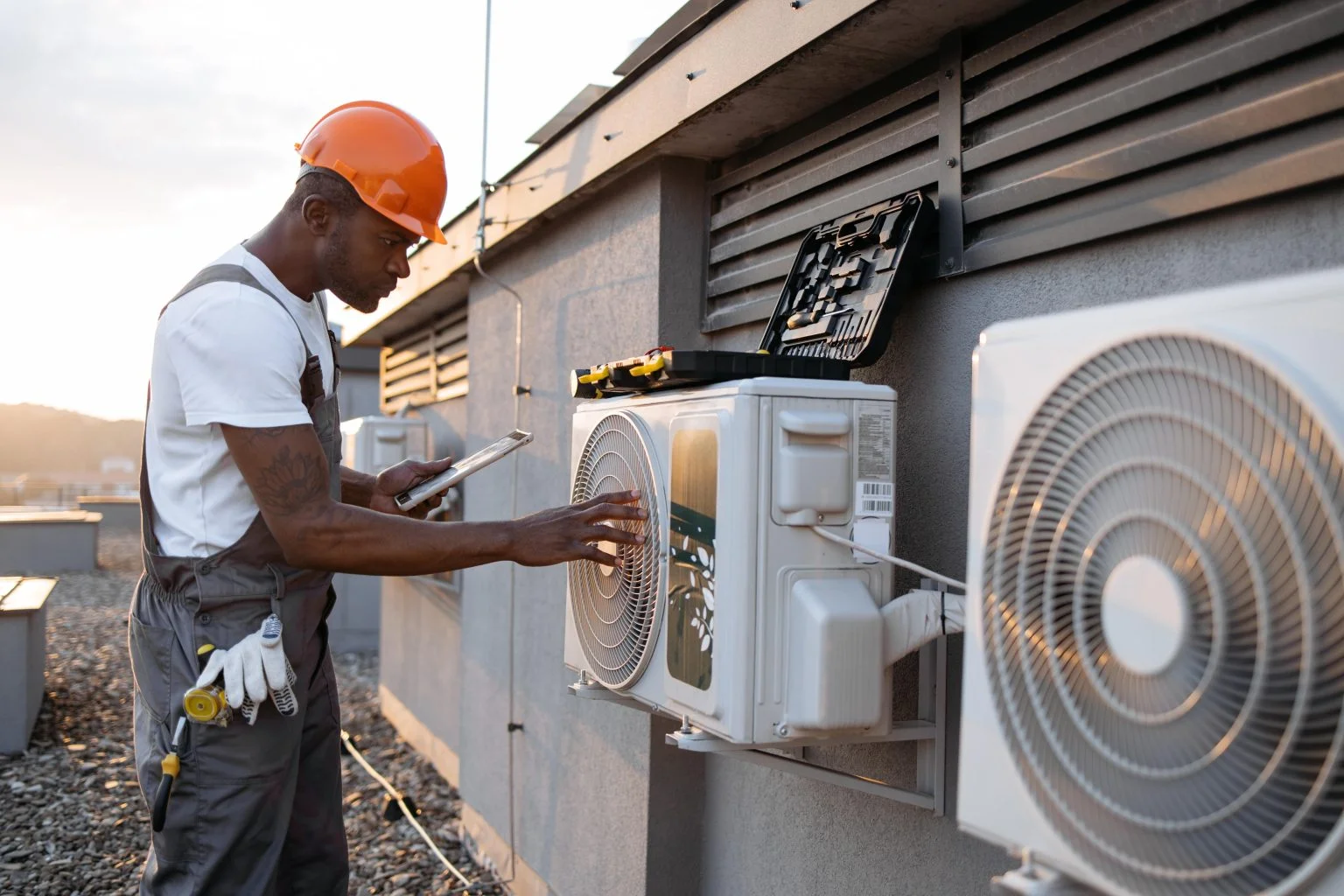Common Errors During heat pump replacement ooltewah tn
Common Errors During heat pump replacement ooltewah tn
Blog Article
How a Warmth Pump and Heating System Collaborate to Maximize Your Home's Home heating Effectiveness
Understanding how a warm pump and furnace work with each other is essential for homeowners looking for effective home heating solutions. Each system has its staminas, supplying a well balanced technique to home comfort. The warm pump excels in moderate temperature levels, while the heating system provides quick warmth throughout extreme cold. This harmony not only lowers energy costs yet likewise boosts the life expectancy of both appliances. What factors affect this collaboration, and exactly how can property owners optimize their benefits?
Comprehending Heat Pumps: Just How They Work
Although several people might be strange with their inner workings, heatpump play a vital function in modern furnace. These devices operate by moving heat from one area to one more, utilizing the principles of thermodynamics. In cooler months, a heatpump essences warmth from the outdoors air, ground, or water, and transfers it inside your home to warm up the space. On the other hand, during warmer months, it can reverse the process, functioning as an air conditioning system by expelling warm from inside to the outside.Heat pumps contain an evaporator, compressor, condenser, and development valve. The cooling agent within the system takes in warmth as it vaporizes at low temperatures and pressures. The compressor after that boosts the pressure and temperature level of the refrigerant, enabling it to launch warm as it condenses. This efficient procedure can greatly lower power usage compared to conventional heating methods, making heatpump a sustainable choice for climate control in homes.
The Duty of Heaters in Home Heating
Furnaces play a vital function in home heating by offering a trusted resource of heat throughout the cooler months. They run by producing heat via burning or electrical resistance, dispersing it throughout the home by means of ducts or glowing systems. The effectiveness of a heating system is commonly determined by its Annual Fuel Usage Efficiency (AFUE) ranking, which shows exactly how successfully the system converts gas into heat.Furnaces can make use of different energy resources, consisting of gas, oil, gas, or electrical energy, allowing home owners to choose the most suitable option for their needs. Unlike heat pumps, which might battle in extreme cold, furnaces keep consistent performance, making certain that interior temperature levels stay comfortable no matter outside conditions. Additionally, modern-day furnaces usually come outfitted with advanced modern technology, such as clever thermostats and variable-speed blowers, improving their performance and responsiveness. This flexibility makes heating systems an important part in comprehensive home heating techniques.

Advantages of Making Use Of Both Equipments With Each Other
Integrating the staminas of both furnaces and heatpump can lead to an extra reliable and reliable home heating remedy. Using both systems permits property owners to capitalize on the heatpump's energy performance during milder temperatures while relying on the heater for even more extreme cold conditions. This dual strategy can substantially minimize power expenses, as heatpump eat less power than standard heating approaches when temperatures are moderate.Additionally, using both systems with each other can improve comfort degrees in the home. Warm pumps can supply consistent, also heating, while furnaces can promptly increase ambient temperature levels when needed. Additionally, the combination of both systems can expand the life-span of equipment by reducing wear and tear on each system, as they share the work. Ultimately, home owners can delight in a well balanced, cost-effective home heating solution that readjusts effortlessly to varying weather condition problems, ensuring a warm and welcoming home throughout the cold weather.
Just How Heat Pumps and Furnaces Complement Each Various Other
They produce a complementary heating system that takes full advantage of effectiveness and comfort when house owners incorporate warm pumps and heating systems. Heat pumps operate by transferring warmth from the outdoors air or ground, making them highly effective in moderate environments. They excel during milder temperatures, offering cost-effective heating. On the other hand, heating systems produce warmth through combustion or electrical resistance, supplying strong, instant heat during extreme cold conditions.The combination of these two systems permits vibrant changes based on temperature variations. Throughout warmer months or milder wintertime days, the warm pump can take the lead, preserving energy and decreasing costs. As temperature levels drop, the heater can effortlessly involve, ensuring consistent warmth throughout the home. This harmony not only enhances power use yet additionally enhances the life expectancy of both systems, as each system runs within its suitable performance variety. Together, they produce a well balanced atmosphere that adapts to differing climate demands.
Enhancing Effectiveness: Tips for Homeowners
House owners can improve their home heating efficiency via a number of sensible approaches. Developing a routine upkeep routine, integrating smart thermostat technology, and implementing efficient insulation and securing remedies are essential actions. These steps not just improve convenience but additionally reduce power costs.
Normal Maintenance Schedule
To assure maximum heating effectiveness, developing a regular maintenance schedule is essential for any kind of home. Property owners ought to prioritize regular inspections of both heatpump and furnaces to establish peak performance. This includes altering air filters each to three months, as blocked filters can significantly reduce efficiency. Furthermore, organizing expert upkeep at the very least as soon as a year permits professionals to determine and resolve potential issues prior to they escalate. Property owners must additionally cleanse the heat pump's outdoor system to stop debris build-up that can prevent air movement. By sticking to a regular maintenance schedule, property owners not only improve their home heating systems' efficiency but also extend their life-span, resulting in higher comfort and minimized power expenses throughout the cooler months.
Smart Thermostat Integration
Integrating a clever thermostat into a home heating system can greatly improve energy effectiveness, specifically as it enables accurate control over temperature settings. These tools can find out the home owner's schedule and preferences, instantly readjusting the temperature to maximize convenience while lessening energy usage. They can decrease heating throughout times when the home is vacant, minimizing unnecessary intake. Several wise thermostats additionally give real-time power usage information, making it possible for house owners to make informed choices about their home heating habits. Additionally, remote accessibility through smart device applications enables users to readjust settings from anywhere, guaranteeing the home is cozy upon return. In general, clever thermostat combination not only enhances convenience but substantially contributes to power savings and effectiveness.
Insulation and Securing Solutions
Smart thermostats play a vital role in power performance, but their performance can be significantly boosted by proper insulation and sealing options. Property owners need to prioritize shielding attics, walls, and floorings to decrease warmth loss. Premium insulation products, such as spray foam or fiberglass, can greatly improve thermal resistance. Additionally, sealing spaces around ducts, doors, and windows avoids chilly air seepage and heat escape. Weatherstripping and caulking work methods for addressing these leaks - heat pump replacement ooltewah tn. Regular evaluations for air leakages, together with using blower door tests, can assist identify issue areas. By spending in insulation and sealing, homeowners can maximize the performance of their home heating systems, ultimately bring about reduced energy consumption and reduced energy bills
Common Myths Concerning Warmth Pumps and Furnaces
What mistaken beliefs surround heatpump and furnaces? Several people mistakenly believe that Our site warmth pumps are inadequate in chillier environments. In fact, contemporary heat pumps are designed to run successfully even in reduced temperatures, providing trusted home heating throughout wintertime. One more usual misconception is that heaters are always a lot more effective than heat pumps. Nevertheless, this depends upon the specific power sources and performance rankings of the systems concerned. Some may also believe that making use of both systems simultaneously is unnecessary, but as a matter of fact, this mix can optimize home heating effectiveness, specifically during severe climate condition. Furthermore, individuals frequently assume that heatpump call for constant maintenance, when actually, they have similar upkeep requires to conventional heater. By unmasking these misconceptions, property owners can make more informed choices concerning their heating choices, inevitably leading to boosted convenience and energy efficiency in their homes.
Maintenance Considerations for Combined Systems

Regularly Asked Questions
Can Warm Pumps Job Successfully in Incredibly Cold Climates?
Heatpump can struggle in very chilly climates because of minimized performance and heat removal restrictions. Innovations in technology have actually led to versions developed for far better efficiency in such problems, improving their feasibility in extreme settings.
How Much Time Do Heat Pumps and Furnaces Usually Last?
Heatpump typically last 15 to twenty years, while heating systems have a life expectancy of 15 to 30 years. Regular upkeep can expand their longevity, making sure reliable procedure and lowering the need for early replacements.

What Is the Ordinary Expense of Putting Up Both Solutions?
The typical expense of mounting both a heat pump and a furnace usually ranges in between $5,000 to $10,000 - ductless mini splits. Variables affecting this price consist of system dimension, installment complexity, and regional labor rates
Are There Tax Obligation Incentives for Utilizing Energy-Efficient Heating Equipments?
Several home owners ask about tax motivations for energy-efficient heating unit. Various government and state programs usually use credit histories or rebates, motivating the adoption of lasting technologies to minimize power consumption and promote environmental responsibility.
Just how Do I Pick the Right Dimension Heatpump and Heating System?
Choosing the right dimension heatpump and heater entails computing the home's square video footage, thinking about insulation quality, and examining neighborhood environment. Consulting a professional can ensure suitable system efficiency and power effectiveness based upon YOURURL.com particular needs. furnace replacement. Recognizing exactly how a warm pump and heater job together is essential for homeowners looking for effective home heating services. In cooler months, a heat pump essences warm from the outdoors air, ground, or water, and transfers it inside to warm up the living area. When homeowners integrate heat pumps and furnaces, they develop a corresponding home heating system that takes full click here to find out more advantage of efficiency and convenience. Warm pumps operate by transferring heat from the outside air or ground, making them very reliable in moderate climates. Heat pumps can struggle in exceptionally chilly climates due to minimized performance and warmth removal limitations
Report this page